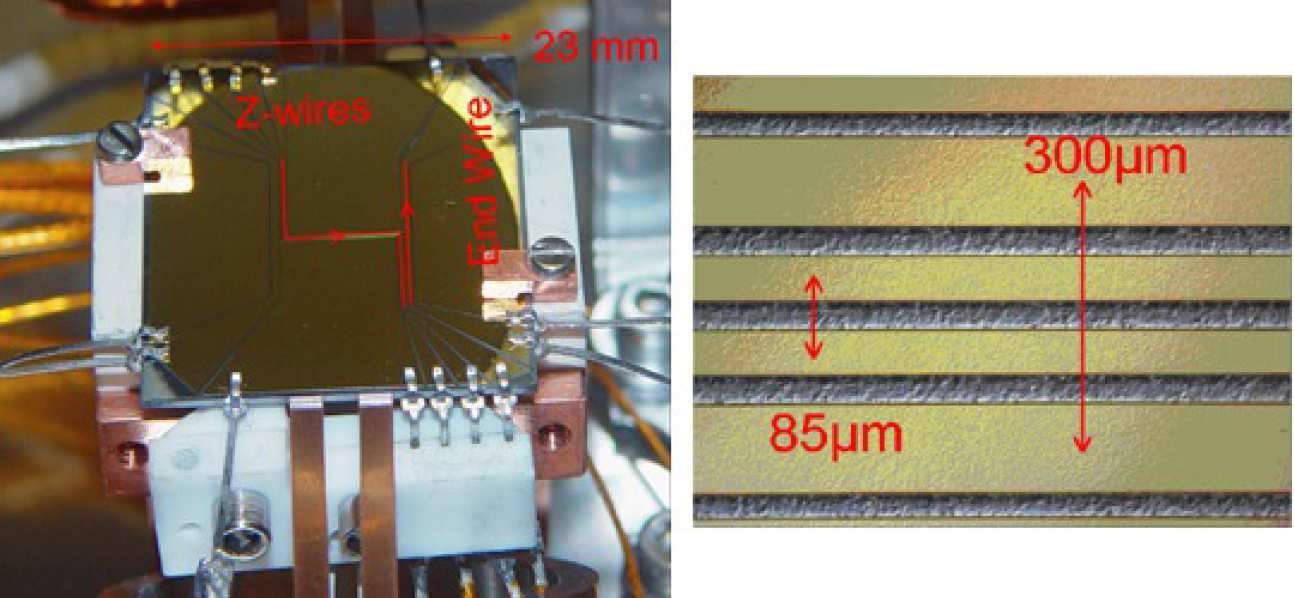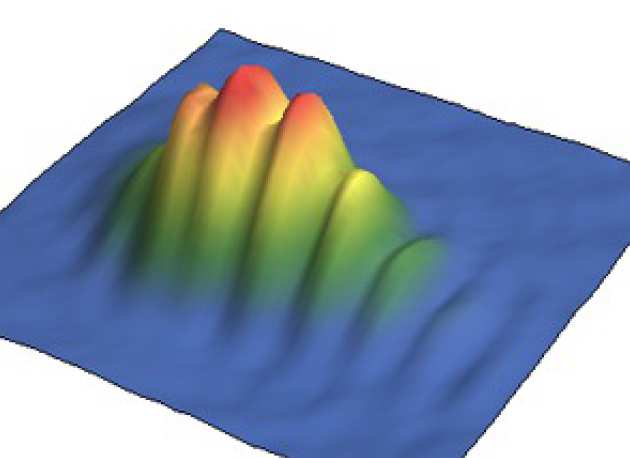Atom chips are micro-fabricated, integrated devices that use electric, magnetic and/or optical fields to confine and manipulate cold atoms. The flexible and accurate control of cold atom clouds and Bose-Einstein condensates (BECs) that can be achieved with these devices makes them ideal for atom interferometry. Such a chip-based atom interferometer has many applications, ranging from fundamental studies of coherence and squeezing during the splitting process to 1D Bose gases and quantum metrology.
Our atom chip is made by evaporating a 3 µm layer of gold onto a silicon substrate. Multiple wires are patterned into this layer by ion-beam milling. The reflective gold surface is also used to make a mirror magneto-optical trap (MOT).

The geometry of the wires is designed to create an elongated Ioffe-Pritchard magnetic trap. The multiple parallel wires allow a single trapping potential to be split into two (or more) traps, forming the analogue of an optical beam splitter.
We load a mirror MOT from a cold atomic beam produced by a low-velocity intense source (LVIS). From there we transfer the atoms into a magnetic trap formed by running current through the chip Z-wires and controlling external bias fields. The cloud is then cooled to BEC via radio-frequency forced evaporation. We typically produce a BEC with up to 106 atoms in this trap.
 Following recent advances in techniques for manipulating atoms using an atom chip, we split our BEC using an adiabatic radio-frequency (RF) double-well potential. The characteristics of the system are determined by the distance between the wells
Following recent advances in techniques for manipulating atoms using an atom chip, we split our BEC using an adiabatic radio-frequency (RF) double-well potential. The characteristics of the system are determined by the distance between the wells 

 Atoms are coupling quite sensitive to magnetic, electric and gravitational fields. However, to measure one of these, it is necessary that the relative phase is stable. That means doing the same experiment with the same parameters over and over again should always give the same relative phase.
Atoms are coupling quite sensitive to magnetic, electric and gravitational fields. However, to measure one of these, it is necessary that the relative phase is stable. That means doing the same experiment with the same parameters over and over again should always give the same relative phase.